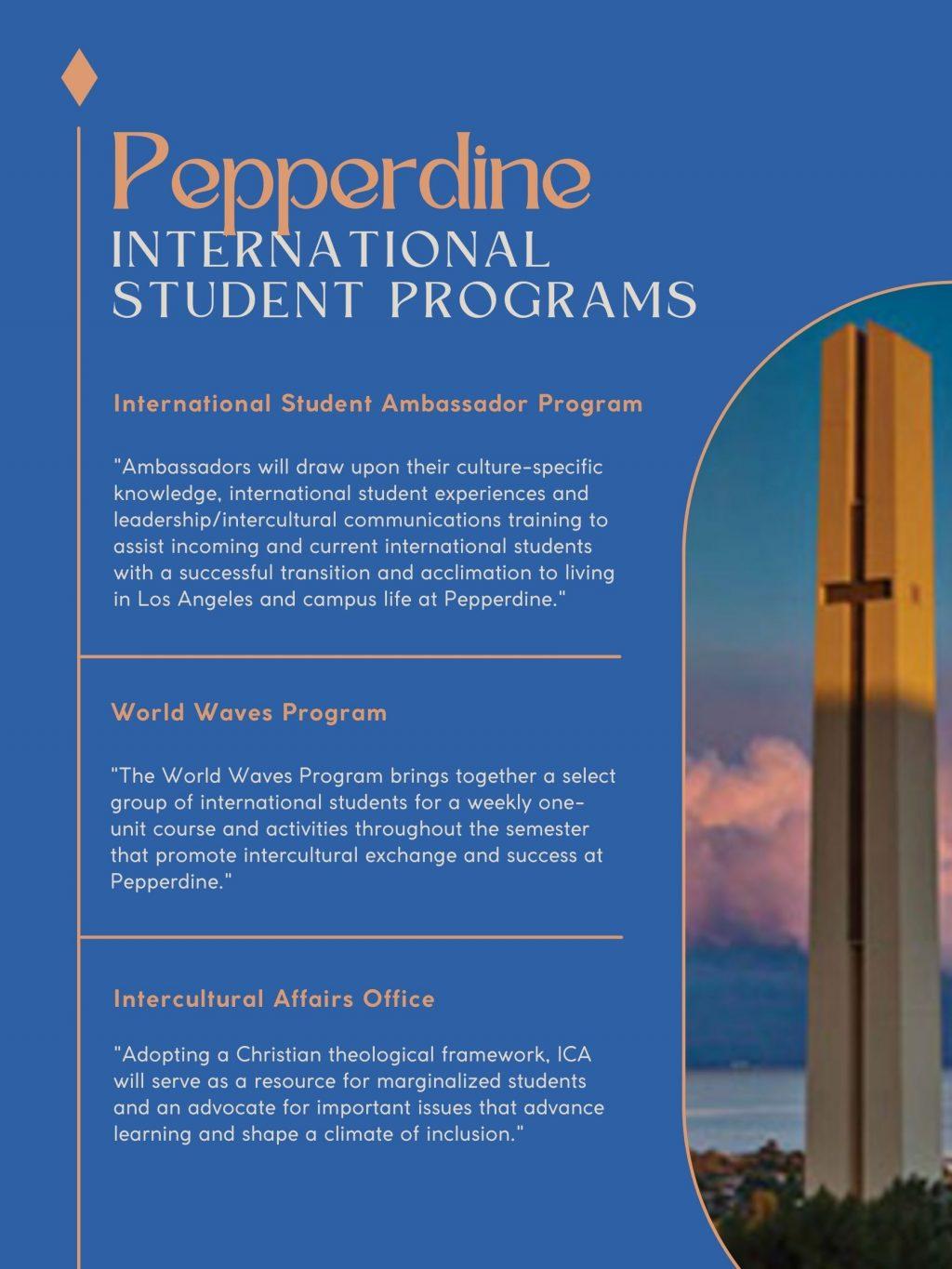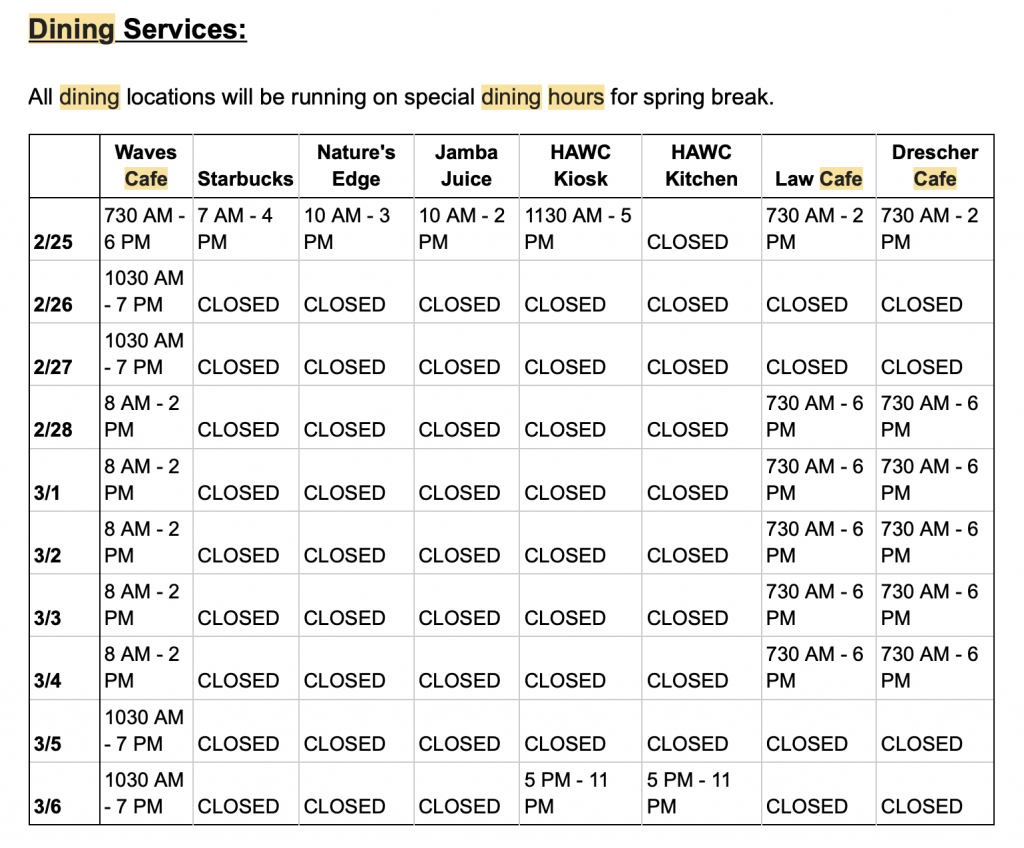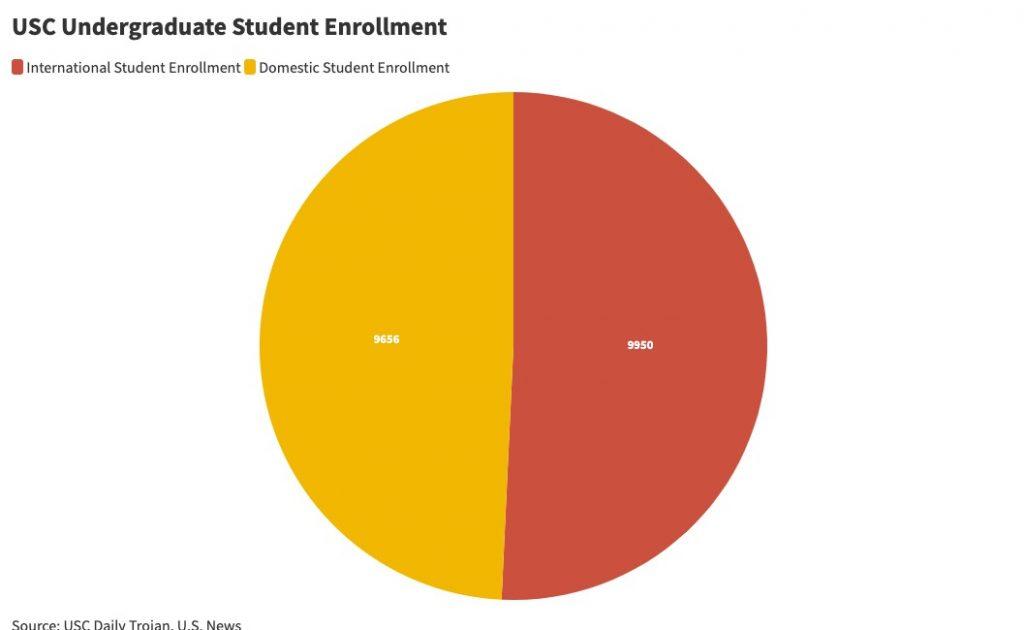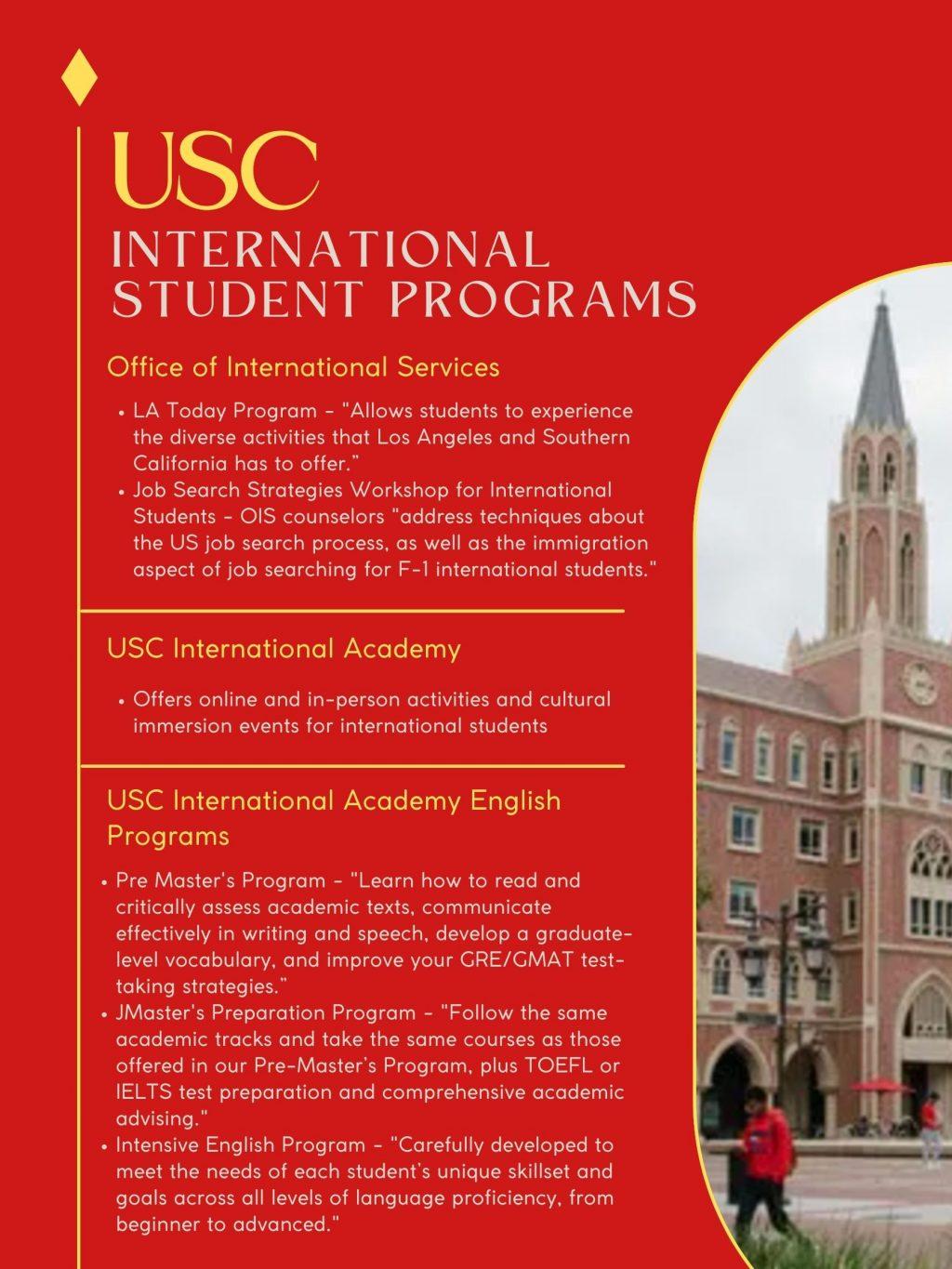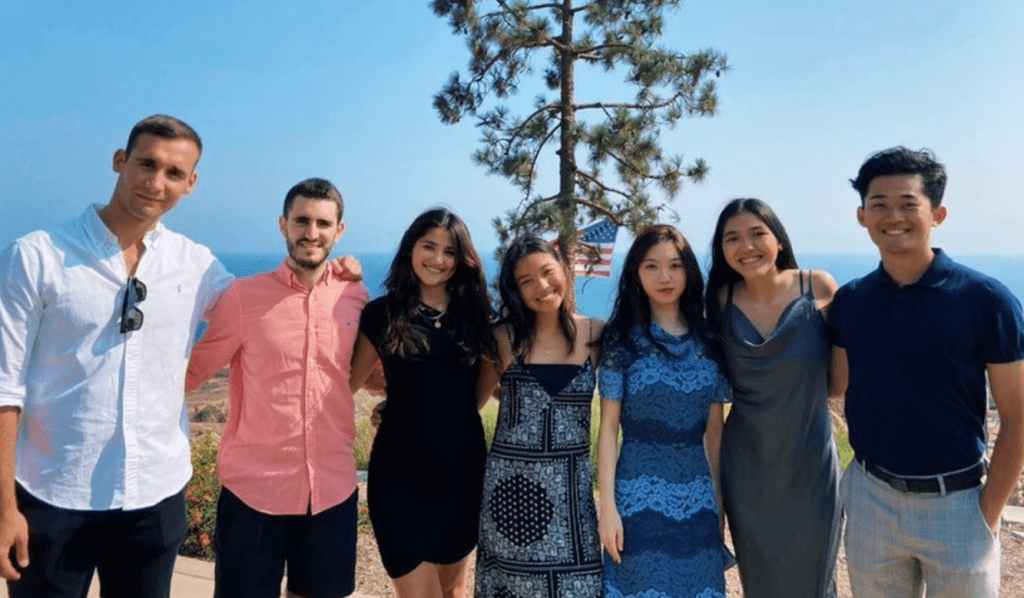
The international student ambassadors at the International Student Reception during INSO at the Brock House August 2021. Ambassadors said they love mentoring other international students and strive to advocate for them. Photo courtesy of Merica Sin
Merica Sin, a senior international student ambassador, came to the United States from Cambodia to pursue higher education. While living in the U.S., Sin said she encountered hardships transitioning socially and culturally.
Sin said she often feels homesick, alienated and yearns for the comforts of her culture — the traditional cuisine and collectivist mentality.
“It’s definitely been a challenge,” Sin said. “Even though I do consider myself pretty Westernized, I’m very exposed to American culture. At the same time, I have Cambodian culture embedded in me.”
With the University establishing the Office for Community Belonging in the fall 2021 semester, Pepperdine took steps toward cultivating a sense of community and belonging on campus. However, international students said they feel they are left out of that mission.
International students make up 13% of Pepperdine University’s student body, attracting students from over 80 countries, according to the Office of International Student Services.
With such a large population of international students, the University faces challenges fostering a sense of community and belonging for these students, including adapting to a new cultural environment, adjusting to a different education system, financial aid limitations and language barriers, students said. However, universities with a large international student enrollment, like University of Southern California, have programs to support their international students.
Importance of Belonging
With Pepperdine’s relatively large pool of international students, it is important for the community to be aware of the different cultural backgrounds and variety of identities on campus, Communications Professor Jennifer Phillips said.
“They have so much more at stake being so far from home and feeling so much more pressure and trying to navigate something extremely unfamiliar can make a whole whirlwind of emotions appear,” Phillips said.
With this transition across the world, a sense of belonging among international students is crucial for success in their college career, according to a 2019 Journal of International Students article.
“People do their best and perform their best when they experience a sense of belonging,” said J. Goosby Smith, vice president for Community Belonging and chief diversity officer. “There’s higher well-being, less anxiety.”
Alumnus, previous Graphic life and arts staff writer and international ambassador Sawa Yamakawa (’22) said he moved to California from Japan because of the diverse demographics and to explore his Asian identity in a different environment.
He said a lot of his peers were interested in his story and were intentional in learning about where he comes from. With this he said he felt welcomed and understood, which made all the difference in easing his transition.
“I felt like my Japanese heritage and identity was actually valued at Pepperdine,” Yamakawa said. “Ever since then I started to embrace my own identity and advocate for minority communities.”
Where Pepperdine Succeeds
Pepperdine offers a multitude of resources that work toward creating a sense of community and belonging among international students, students and faculty said.
Among these resources is the International Student Ambassador Program, where the OISS selects returning international students to serve as mentors to incoming international students from International New Student Orientation onward.
The international students said the program mentors helped ease their college transition as first-years, inspiring them to take on the position to do the same for other students.
The intention of this program is to create a space where international students can support each other through culture shock, intercultural conflict and homesickness, according to the program’s website. OISS trains ambassadors in intercultural communication and leadership skills, according the website.
“I get to meet all the new guys that come in from all around the world,” said senior Mauricio Contreras, an international ambassador from Peru. “They just make me feel like I’m not alone.”
In the fall, the Seaver Student Success Center implemented a new program — World Waves. The semester-long program is intended to help first-year international students familiarize themselves with campus culture and cultural differences within the United States, according to the program website.
“We were just aware of a need for international students to find confidence and community and we wanted to help them do that a bit earlier in their careers,” Student Support Coordinator Cory Robertson said.
In the 2021-22 academic year, three domestic students mentored 13 international students, Robertson said. OISS trained the mentors in intercultural competence and communication strategies, Robertson said. The program allows international students to go on field trips throughout Los Angeles, build relationships with community members and take HUM 295, “Enriching the International Experience.”
Aside from these programs, the Intercultural Affairs office provides support and resources for international students, according to their website.
ICA, along with cultural clubs on campus, hosts cultural events and works toward giving students a sense of home away from home. It is through these events students said they are able to meet other students of the same cultural background, as well as learn about and engage with cultures different from their own.
The counseling center also offers an international student support group, where students can have a space to connect with others on the unique challenges of studying in the U.S., learn about resources and discover their cultural strengths.
Additionally, Sharon Wakio, assistant director for Residence Life for international students and 2018 international student graduate from Pepperdine’s Graduate School of Education and Psychology, said she organizes events to immerse international residents into the L.A. lifestyle. She said she compiles a list of events and resources and posts them on a monthly newsletter designated for international students.
Wakio also hosted a Seaver 200 class specific to international students called, “Sojourners Culture.” In this course, students discuss faith in the U.S., being an immigrant, culture shock and the overall adjustment of being an international student Wakio said.
Pepperdine University offers a multitude of resources to help international students cultivate a sense of community and belonging. International students said the most helpful has been the International Student Ambassador Program. Infographic by Yamillah Hurtado
Office for Community Belonging Makes Waves
Pepperdine established its OCB in fall 2021 with the goal of facilitating “the creation of fertile ground in which all Pepperdine community members know they belong and can reach the levels of spiritual, intellectual and professional development that God has planned for them,” according to their website.
Smith said she hopes to have visioning sessions with several international student groups because their perspectives are essential to creating a sense of belonging.
“There’s the international student big group, but there are also more nuanced things that I know that different groups have different experiences so I want to talk with as many students as possible,” Smith said.
In these visioning sessions, Smith said she will use an appreciative inquiry approach — a method that looks at what students believe Pepperdine is doing well. She said she plans on taking the student responses, analyzing them and finding ways in which the office can make changes in campus policies and practices to better serve students and their needs.
“If you only look at problems, you can fall into a quagmire and you can break some of the things that work and that’s the last thing we want to do,” Smith said.
Aside from this, Smith said the office tried to implement an optional course students can take to learn more about cultural diversity and be more aware of a wide range of identities and cultures for this semester.
The Graphic reached out to the OCB for a follow-up in a Sept. 5 email, but OCB did not respond.
Where Students Say Pepperdine Falls Short
Although Pepperdine provides a number of resources for students in terms of INSO, OISS, ISAP and campus life programs, international students said some areas still need improvement and greater support initiatives.
“Other than [OISS], as internationals there’s not much,” Contreras said. “There’s not much, just the cultural clubs and the ambassadors. The rest is just take a guess and you’re on your own.”
Lack of Cultural Understanding Among Domestic Students
International students like Yamakawa said at times there can be a lack of cultural awareness among domestic students, leading to microaggressions, or an instance of unintentional discrimination, and the formation of stereotypes.
“I became aware of how a lot of international students experience microaggression because of their background as an international student,” Yamakawa said. “I feel like the general stereotype of international students is that they come from really comfortable wealthy backgrounds. But, that’s not necessarily the case for everyone.”
Alongside other Asian international students, Yamakawa said he personally experienced racial discrimination from domestic students at the height of the pandemic. As an international ambassador, Yamakawa said he wanted to prevent incoming international students from having similar experiences during their time at Pepperdine.
Yamakawa said he appreciates there are also a lot of domestic students on campus who support international students and advocate for their needs.
“As for the domestic students, not all of them are understanding or open and that’s a sad reality,” Yamakawa said. “But, those who are willing to know our stories are really fighting for us and just walking alongside us to kind of advocate for what is right.”
Adapting to a New Cultural Environment with Unique Needs
In addition to trying to find their footing in the social atmosphere at Pepperdine, international students said they are oftentimes forced to adapt to a completely different culture, which can pose challenges.
Growing up in Cambodia’s collectivist culture, which prioritizes family and community, Sin said she experienced culture shock coming to Pepperdine. Coming into the U.S., which has a contrasting individualistic culture, was an adjustment, Sin said.
“[The culture at Pepperdine] is very survival of the fittest, kind of like one man for all,” Sin said. “It’s very challenging in that sense. I feel, a lot of times, like there’s no one there for me.”
Having to transition to a new culture, Sin said she often felt isolated and as if no one understood her struggles.
“I try to share how I feel with other people,” Sin said. “I feel, at Pepperdine specifically, they don’t really understand exactly what I’m trying to say, where I’m coming from — I just want to be heard.”
Sin said she feels the needs of international students are not always prioritized at Pepperdine.
For example, the holiday cafeteria hours do not take into consideration many international students have to stay on campus and fend for themselves, while many domestic students are able to visit their families. Therefore, Sin said she can feel incredibly homesick — especially the holidays — missing her family and native cuisine.
“I think as international students, we all trauma bond through similar experiences,” Sin said. “Whether it’s missing home or missing the food, we understand each other in that sense.”
Spring Break 2022 Dining Service Hours
Screenshot of a Feb. 23 email from Pepperdine housing office to students.
Sin said she wishes international students were prioritized for housing selection, because many of her international student friends were left without housing for this semester. With many international students without cars like Sin, finding off-campus housing is impractical.
“Getting a car and getting a license is such a hassle for some of us [international students],” Sin said. “If we want to go out we have to depend on people and sometimes I feel like I’m a burden asking people for rides.”
Adjusting to the Education System in the United States
In addition to adjusting culturally and socially, many international students have to adjust to the academic curriculum in the United States — which can often look very different from their education system back home, Yamakawa said.
“A lot of international students kind of struggle a little bit with how the American education systems are different from their own country,” Yamakawa said.
Yamakawa said the school should work to provide alternate methods of teaching to accommodate for the disparity between education systems in the U.S. and international education systems.
Lack of Financial Resources
Along with the challenge of adjusting to a new educational system, international students do not qualify for various federal and in-state loans, further placing pressure on them to do well in school to receive any sort of scholarship opportunities, Wakio said.
“A lot is being invested into international students also from their family perspective,” Wakio said. “A lot of their parents bring them [to Pepperdine] and support them here and so I know it is important for them to feel like they’re making their parents proud.”
Wakio said Pepperdine should create more opportunities for international students to receive scholarships and grants through merit, leadership positions and off-campus donors to reduce the financial burden.
Under-management of Cultural Clubs
While there are several cultural clubs on campus, which can help international students find a sense of belonging within the community, oftentimes the University’s support is lacking, Yamakawa said.
Yamakawa, who is one of the club members of the Japanese Student Union on campus, said at times it can be challenging to get engagement within the club because larger organizations, such as Fraternity and Sorority Life, overshadow the cultural clubs. Yamakawa said support from the University could help bring more awareness to the cultural clubs on campus.
“I wish that there was a University-wide event highlighting all these different cultural and international experiences and heritages so that a lot more people can be involved with it,” Yamakawa said. “Instead of just the University asking clubs or just clubs volunteering to table and host events because we don’t really get that much engagement and it’s kind of sad.”
Club-hosted events for the fall semester include ISA’s Diwali Celebration on Oct. 28, Latinx Student Alliance’s Dia De Los Muertos Celebration on Nov. 1. The University does not host these events, and the events are not indicated on Pepperdine’s event calendar. The clubs are responsible for volunteering, and applying for funding through ICC.
As an international student from Thailand, alumna Harleen Chhabra (’22) said she also wants to see more representation for Southeast Asian culture among campus clubs and events.
“I think it would be really great if we did a festival showcasing different Southeast Asian cultures,” Chhabra said.
Contreras also said a lot of cultural clubs and clubs in general on campus do not actively try to engage students.
“Clubs are kind of undermanaged,” Contreras said. “They just create the club, put it on their resumé and that’s where the club goes.”
Areas Where the Programs Fall Short
OISS’ ISAP is a resource for international students, however, several international students said there are still some areas Pepperdine should alter.
For nearly 500 international students at Pepperdine, there are only seven international ambassadors, Yamakawa said. With such a small ambassador program, he said there can be a lack of representation which creates barriers in creating a deeper bond among mentors and mentee international students.
Yamakawa said he found it difficult to form a close relationship with his international ambassador because there was no one from the team from Japan when he was a first-year.
The IASP does not represent every continent, just as there was no ambassador from Japan when Yamakawa was a student, there was also no ambassador for Africa for the 2021-2022 academic year according to the IASP website.
Wakio said Pepperdine should try to expand its recruiting to bring in a greater international student population from African countries to help create a more culturally diverse campus.
“More recruiting and being more competitive in that we can pull in more African students,” Wakio said. “We have a lot of students from Europe, from Canada and from Asia and so I think that would help to diversify our campus.”
The Student Success Center created World Waves, which is not widespread, Robertson said. Only 13 international students and three mentors participated in the fall 2021 semester. The program is also only available for first-year and first-semester international students during the fall semester.
“It’s not a program that every international student was able to participate in,” Robertson said. “Finding ways to kind of integrate those services for all international students is probably a good idea.”
Community Belonging Success at USC
The University of Southern California is one of the top schools in the nation for hosting international students, bringing in more than 14,900 international students for the 2020-21 academic year, according to Statistica. International students representing more than 135 countries make up a quarter of the entire student population, according to USC admissions.
USC has a larger student population than Pepperdine, with an undergraduate student body of approximately 21,000. Pepperdine’s population is 3,459, which is six times fewer than the population of USC when looking at USC figures vs. Pepperdine figures.
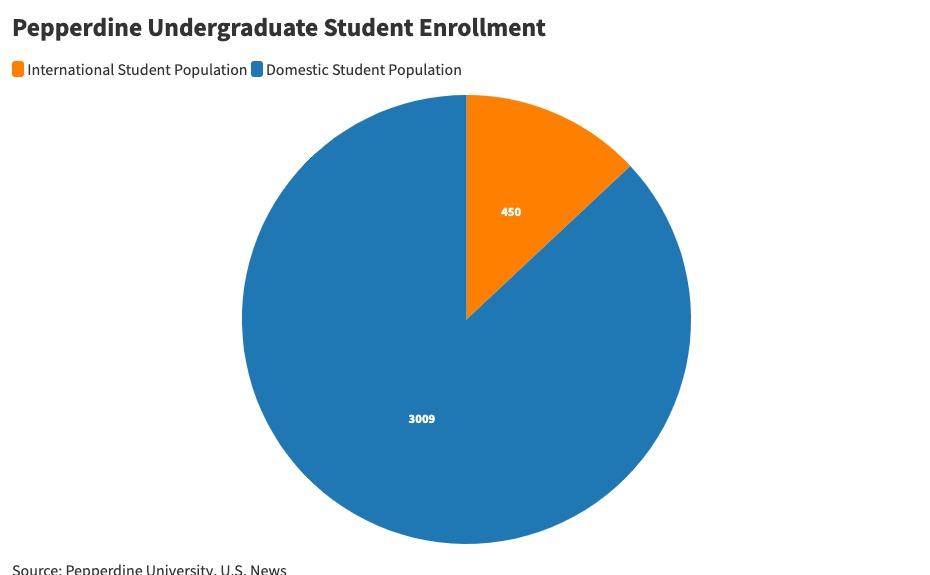
Misha Krasnoshchekiy, a USC international transfer student from the United Kingdom, said he was surprised to see how expansive the international student population was at USC. Taking part in the intramural soccer team at USC, Krasnoshchekiy said he was able to connect with many European international students.
“When I came, I was like, ‘Oh wow, actually there’s a bunch of people from all over the world,’” Krasnoshchekiy said. “They’re into the same stuff as I am, they can relate in terms of being an international student.”
Just like Pepperdine, USC has its own Office of International Services that helps assist international students with navigating the college experience and living in Los Angeles. The USC office offers a number of programs for international students, including the LA Today program and Job Search Strategies for International Students Workshop.
The OIS Events and Programs Page states that the “allows students to experience the diverse activities that Los Angeles and Southern California has to offer,” through different planned events to beaches, parks, museums and so on. Some of the program’s past trips included Catalina Island, Griffith Park, Getty Museum and Big Bear Mountain.
The USC International Academy also offers a number of online and in-person activities and cultural immersion events for international students. Some online offerings include an interviewing in the U.S. workshop and a California Travel Guide, while the in-person activities consist of group trips around Los Angeles.
Additionally, the Academy program offers several English-language programs to help international students improve their language proficiency to and better immerse themselves within lifestyle of people in the United States. The three different programs offered are the Pre-Master’s Program, the Master’s Preparation Program and the Intensive English Program.
The USC Academy program English-language programs equip international undergraduate students with “the tools to express your ideas powerfully, pursue knowledge across boundaries and successfully navigate life in the United States — all while experiencing the transformative power of USC,” according to their website.
International undergraduate students within USC’s Pre-Master’s Program and Master’s Preparation Program “learn how to read and critically assess academic texts, communicate effectively in writing and speech, develop a graduate-level vocabulary, and improve your GRE/GMAT test-taking strategies,” according to the website.
Courses within this program consist of campus life, lifestlye of people in the US, conversational grammar, international communication, L.A. culture and community and many others.
The Intensive English Program caters to the needs and language proficiency level of each student according to their website. Some of the program benefits include small class sizes; group application workshops; interactive learning; support from academic, immigration and student advisors and connections with USC International Academy Partner Schools.
Pepperdine does not offer any English-learning programs.
USC, one of the top schools within the nation to host international students, puts on a multitude of events for its students to get engaged with campus and LA culture. They also offer students English-learning programs to prepare them for higher education in the U.S. Infographic by Christina Buravtsova
Cultivating a Sense of Belonging Is a Community Effort
While Pepperdine does offer multiple programs to assist international students on campus, many of these programs are new and lack support and awareness for greater student engagement, international students said.
Wakio said it is important for the University to continue doing assessments with international students to better understand their needs and concerns. Additionally, she said the University should provide more financial resources for international students.
“If we want a more diverse group of students to come, we have to make the opportunity more accessible,” Wakio said.
While students and faculty, like Wakio, recognize the need for improvements, members of the Pepperdine community said students have to take the initiative to educate themselves and become culturally enlightened.
“ICA, itself, is doing a good job of creating passive programming and events to have students learn more about different cultures, and I feel like Pepperdine is doing a good job,” Sin said. “It’s more of a question and a matter of, ‘Are students willing to learn, are students willing to keep an open mind, are students willing to culturally educate themselves about certain things?’”
Phillips said students can engage with cultural clubs and visit ethnic-specific towns in the L.A. area, such as Thai Town, Little Armenia, Little Tokyo, Koreatown and Chinatown to educate themselves. Domestic students should be more intentional in building relationships with international students, Phillips said.
“People have to be willing to put down their preconceptions and guards long enough to see that the other person that God also created is just as important as they are and to develop a curiosity and a sense of cultural humility to want to learn about that person,” Smith said.
_________________________________
Follow the Graphic on Twitter: @PeppGraphic
Email Christina Buravtsova: christina.buravtsova@pepperdine.edu
Email Yamillah Hurtado: yamillah.hurtado@pepperdine.edu

